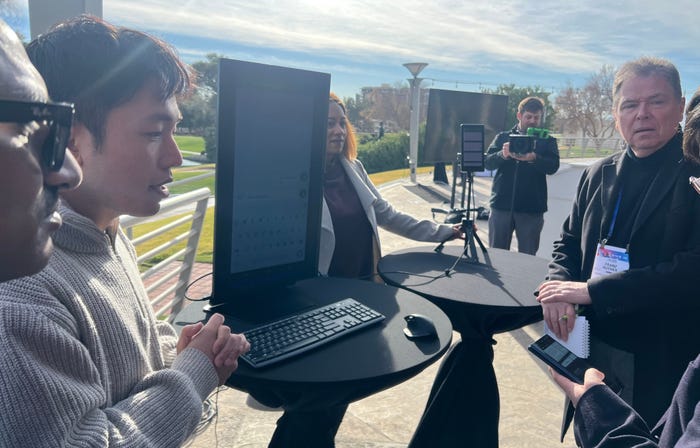An inside look at AT&T’s 5G and fiber focusAn inside look at AT&T’s 5G and fiber focus

DALLAS – Earlier this month, AT&T gave a few journalists a chance to see what the telecom network of 100 years ago looked like (some of it is still operational). We also got to hear what the near future holds for AT&T’s edge computing plans, which aim to blend its fiber and 5G networks to power a world-beating portfolio of network services.
As a nod to its past, our hosts whisked us through a Dallas central office located in a neighborhood between Deep Ellum and Lower Greenville. It was a cathedral of no-excuses, always-on connectivity.
Sitting at the ready are rooms of backup batteries and entire buildings housing industrial gas-powered generators. There are rows of switches, servers and what looked like thousands of miles of wires that, at this moment, no one needs at all. But, when needed, the whole operation cranks up and crackles to life, so the people on the other end of hundreds of thousands of regional phone and broadband connections never know the difference.
AT&T seems eager to return to those more industrial roots, but only in its attitude and focus. Technology is remarkably different now, but the drive to connect everyone with resilient networks is constant. The carrier’s newly promoted executives, several of whom have arrived from other industries, see AT&T as a company focused on 5G and fiber.
Longer-tenured AT&T execs and industry watchers have learned to unsee the decades of distractions from a company that aspired to be an advertising firm, a public cloud provider, a pay TV colossus, and more. It started and stopped all those clumsy grasps at growth with the patience of a bored billionaire teenager.
And, of course, there was AT&T’s entertainment company cosplay. The carrier once sent us a press release celebrating “Batman Day.” It bought WarnerMedia for $85 billion in a 2016 deal and then shed the entertainment group via a deal that combined the WarnerMedia business with Discovery to form a new company. The series finale of AT&T’s media moves aired in April.
“We are at the dawn of a new age of connectivity, and today marks the beginning of a new era for AT&T,” stated John Stankey, AT&T’s CEO.
To the edge and back
Before the central office tour, we were briefed by several AT&T managers on technology, security, consumer business, its FirstNet operations and its business services. Every single executive talked about how AT&T was building out services closer to customers, shoring up its network edge and using the cloud and improving operations to make delivering and consuming networks simpler.
A big part of that journey is AT&T’s network cloud and its appetite for what it calls the multiservice edge. The company’s CTO, Jeremy Legg, said that AT&T can have a real competitive advantage as it builds out its network, blending its wireline and wireless networks “in municipalities and edges around the country.” That kind of distributed network makes “a very big difference in terms of how traffic is routed around and the capabilities that begin to get delivered,” he said.
He noted three things AT&T is doing to create the modern network edge. The first is to use software-based routing and white boxes with Linux-based operating systems. AT&T’s network cloud, a key component of its multiservice edge, long ago rejected proprietary gear that would result in the company losing control of how fast it could respond to new demands on its network operations.
The second edge “must have” is the 5G standalone core. AT&T wants to “federate where those cores sit” and create an environment where services are available whenever needed and at the lowest latency required by the application. With millions more devices connecting to its networks at increasing frequency, Legg said these software-based 5G cores could go closer to where people and services meet – and in greater numbers as use cases demand it.
The third characteristic of AT&T’s edge approach is its evolving, strategic relationship with cloud providers. “We don’t want the compute and storage of the applications that run on our network to be served by us,” he said. “We want the people that build those applications to run wherever they want them to run. They can run them in a private data center. They can run them in Azure, Amazon, Google, or wherever they want to run them. That’s fine with us.”
To read the complete article, visit Light Reading.



